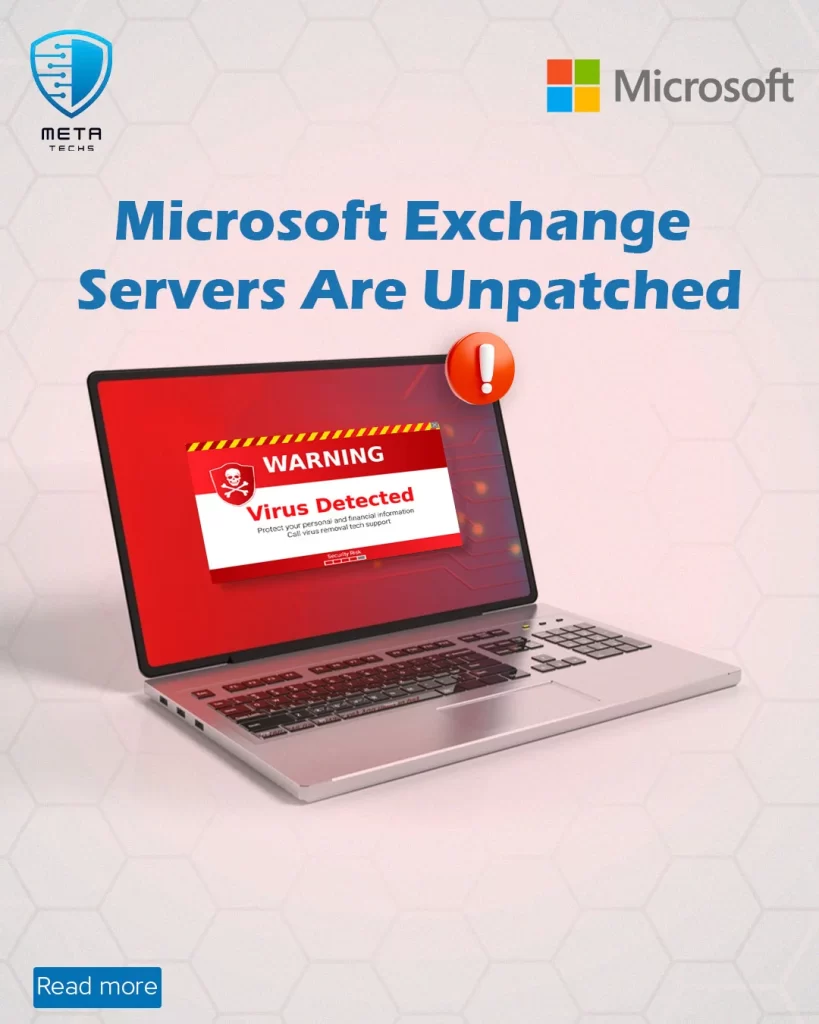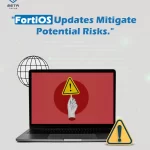Microsoft Exchange Servers Are Unpatched, leaving many businesses vulnerable to attacks like the recent Hafnium campaign that exploited zero-day vulnerabilities. Despite Microsoft releasing security updates and mitigation tools, investigations revealed over 62,000 potentially vulnerable on-premises Exchange Servers globally, with the United States and Germany among the most affected. The lack of proper patching exposes organizations to risks like ransomware, spam trends, and malicious email attacks that can cripple operations and lead to data breaches. This scenario underscores the critical need for patch verification and awareness of the exchange hack and Microsoft exchange zero-day vulnerabilities.

Reasons for the unpatched servers range from inexperienced IT staff and fears of downtime to the complexity of applying updates in on-premises environments. As cybercriminals rapidly exploit known vulnerabilities, it is crucial for businesses to prioritize patching and adopt best practices to secure their Exchange Servers and reduce the attack surface. Consult credible IT service providers like Meta Techs for expert guidance on patch management and comprehensive cybersecurity solutions tailored to your needs.
Are Exchange servers secure?
Microsoft has proactively taken steps to bolster the security of Exchange Servers by releasing Security Updates (SUs). These updates, targeting the latest versions of Exchange Server 2019 (CU12 and CU13) and Exchange Server 2016 (CU23), aim to fortify the system against vulnerabilities reported by security partners and those uncovered through Microsoft’s rigorous internal processes.
While Microsoft is not aware of any active exploits targeting these vulnerabilities, they strongly recommend the immediate installation of the SUs to safeguard on-premises Exchange environments. The updates are designed to resolve critical vulnerabilities, ensuring enhanced protection.
- CVE-2023-36439
- CVE-2023-36050
- CVE-2023-36039
- CVE-2023-36035
Additionally, the SUs address various issues, such as:
- Serialization payload signing failing to run RBAC cmdlets.
- Mailbox migration failing with communication error permanent exception.
- ‘Object ” couldn’t be found on ”’ error when uninstalling updates.
- Issues with changing permissions for Public Folders
To ensure a secure and seamless update process, Microsoft provides several recommended update paths:
- Install the latest Cumulative Update (CU) using the Exchange Update Wizard
- Run the Exchange Server Health Checker script to identify and resolve potential issues.
- Use the Setup Assist script if any errors occur during the update process.
It’s crucial to note that Exchange Server 2013 has reached its end of support and will no longer receive security updates. Businesses still operating on Exchange Server 2013 are advised to prioritize migrating to a supported version, such as Exchange Server 2019 or Exchange Online, to ensure their email environment remains secure and compliant.
For expert guidance on patch management, security updates, and comprehensive cybersecurity solutions tailored to your business needs, consider consulting with Meta Techs, a reputable IT service provider.
Risks of Microsoft Exchange Servers Are Unpatched
Failing to patch Microsoft Exchange Servers exposes organizations to significant risks that can compromise their operations, data security, and reputation. Here are some critical risks associated with unpatched Exchange Servers:
- Ransomware Attacks Unpatched vulnerabilities serve as entry points for ransomware operators to infiltrate systems, encrypt data and demand hefty ransoms. The recent surge in ransomware attacks, exploiting zero-day exchange vulnerabilities, has led to widespread disruptions and financial losses for businesses worldwide.
- Data Breaches Cybercriminals can exploit unpatched vulnerabilities to gain unauthorized access to sensitive data, such as customer information, financial records, and intellectual property. Data breaches, particularly those stemming from a Microsoft Exchange breach, can result in severe legal and financial consequences, as well as damage to an organization’s reputation.
- Malicious Email Campaigns Unpatched Exchange Servers are prime targets for malicious email campaigns, including spam, phishing, and malware distribution. These attacks can lead to credential theft, financial fraud, and the spread of malware throughout an organization’s network.
- Compliance Violations Many industries have strict regulations and standards governing data security and privacy. Failing to patch known vulnerabilities in Exchange Servers can result in non-compliance, potentially leading to hefty fines, legal action, and loss of customer trust.
- Business Disruptions Successful attacks on unpatched Exchange Servers can disrupt critical email communications, calendaring, and collaboration functions, leading to productivity losses, missed deadlines, and potential revenue losses.
- Lateral Movement and Persistence Unpatched vulnerabilities can provide attackers with a foothold in an organization’s network, enabling them to move laterally and establish persistent access for future attacks or data exfiltration.
Read More About Why Your Business Needs a Penetration Test?
Impact on Businesses
The failure to patch Microsoft Exchange Servers can have severe consequences for businesses, disrupting operations, compromising data security, and incurring substantial financial losses. Here are some of the critical impacts that unpatched Exchange Servers can have on organizations:
- Operational Disruptions Successful cyberattacks on unpatched Exchange Servers can cripple email communication, calendaring, and collaboration functions, leading to productivity losses, missed deadlines, and potential revenue losses. These disruptions can be particularly damaging for businesses that heavily rely on email for customer interactions, project coordination, and day-to-day operations.
- Data Breaches and Theft Unpatched vulnerabilities in Exchange Servers provide entry points for cybercriminals to gain unauthorized access to sensitive data, such as customer information, financial records, and intellectual property. Data breaches can result in severe legal and financial consequences, as well as damage to an organization’s reputation and customer trust, especially when a Microsoft Exchange zero-day vulnerability is exploited.
- Ransomware Attacks Cybercriminals have been actively exploiting vulnerabilities in unpatched Exchange Servers to launch ransomware attacks. These attacks can encrypt critical data and systems, rendering them inaccessible until a ransom is paid. Ransomware attacks can lead to significant downtime, data loss, and substantial financial losses, particularly if organizations are unprepared or lack robust backup and recovery strategies.
- Compliance Violations Many industries, such as healthcare, finance, and government, are subject to strict regulations and standards governing data security and privacy. Failing to patch known vulnerabilities in Exchange Servers can result in non-compliance, potentially leading to hefty fines, legal action, and loss of customer trust.
- Reputational Damage High-profile data breaches, ransomware attacks, or other security incidents resulting from unpatched Exchange Servers can severely damage an organization’s reputation. This can lead to loss of customer confidence, decreased market share, and long-term financial implications.
To mitigate these risks and ensure the security and continuity of their email and collaboration infrastructure, businesses are strongly advised to prioritize patching their Exchange Servers promptly. Consulting with reputable IT service providers like Meta Techs can provide expert guidance on patch management, security updates, and comprehensive cybersecurity solutions tailored to your organization’s specific needs.
Mitigation Strategies
Mitigating the risks associated with Microsoft Exchange Servers Are Unpatched Exchange Servers requires a proactive and comprehensive approach. Here are some effective strategies organizations can implement:
- Prioritize Patching Establish a robust patch management process that prioritizes the timely installation of security updates and patches for Exchange Servers. Regularly monitor for new vulnerabilities and promptly apply patches as soon as they become available.
- Migrate to Supported Versions If you’re running an unsupported version of Exchange Server, like Exchange Server 2013, it’s a smart move to start planning your migration to a supported version such as Exchange Server 2019, or even consider transitioning to a cloud-based solution like Exchange Online. This is a critical step to ensure you’re operating on the most secure versions available, protecting your system from potential vulnerabilities.
- Implement Layered Security Controls:
- To shield Exchange Servers from external threats, it’s vital to deploy advanced security solutions, including firewalls, intrusion detection/prevention systems (IDS/IPS), and web application firewalls (WAF).
- Implement multi-factor authentication (MFA) to secure remote access and privileged accounts.
- Regularly scan for vulnerabilities and misconfigurations across the entire Exchange environment.
- Enhance Monitoring and Logging:
- Setting up comprehensive logging and monitoring mechanisms is essential to quickly detect and respond to potential security incidents. This exchange server monitoring strategy plays a crucial role in maintaining the integrity and security of your system.
- Adopting Security Information and Event Management (SIEM) solutions can significantly enhance your ability to correlate and analyze log data from various sources, leading to faster threat detection and response.
- Develop Incident Response and Recovery Plans:
- It’s important to establish an incident response plan that clearly outlines the procedures for identifying, containing, and recovering from security incidents involving Exchange Servers.
- Implementing robust backup and recovery strategies is key to ensuring the availability of critical data and systems in the aftermath of a successful attack.
- Conduct Regular Security Awareness Training:
- Educating employees on cybersecurity best practices, including how to identify and report suspicious emails, phishing attempts, and other potential threats targeting Exchange Servers, is a fundamental step in enhancing your security posture.
- Leverage Expertise from IT Service Providers:
Consulting with reputable IT service providers like Meta Techs for expert guidance on patch management, security updates, and comprehensive cybersecurity solutions tailored to your organization’s specific needs can make a significant difference.
By adopting these mitigation strategies, organizations can significantly lower the risks associated with unpatched Exchange Servers and bolster the overall security posture of their email and collaboration infrastructure.
Conclusion
Neglecting to promptly patch and secure Microsoft Exchange Servers Are Unpatched leaves organizations vulnerable to a host of risks, including data breaches, ransomware attacks, compliance violations, and operational disruptions. These threats can lead to considerable financial losses, reputational damage, and a loss of customer trust. Mitigating these risks demands a proactive and comprehensive approach that includes effective patch management processes, layered security controls, incident response planning, and employee awareness training.
To effectively navigate the complexities of Exchange Server security and implement tailored solutions, businesses can benefit from leveraging the expertise of reputable IT service providers like Meta Techs. Our experienced professionals offer comprehensive cybersecurity solutions, including patch management, security updates, and customized strategies to fortify your email infrastructure against evolving threats.
Meta Techs your It service security
For expert guidance on patch management, security updates, and comprehensive cybersecurity solutions tailored to your business needs, Meta Techs offers a range of services to protect your organization from the risks posed by unpatched Microsoft Exchange Servers:
- Vulnerability Assessment Our team conducts thorough assessments to identify vulnerabilities in your Exchange Server environment, prioritizing critical patches and updates to mitigate potential threats.
- Patch Management We implement a robust patch management process, ensuring that security updates and patches are promptly applied to your Exchange Servers, minimizing the risk of exploitation by cybercriminals.
- Cybersecurity Solutions: Meta Techs provides a comprehensive suite of cybersecurity solutions, including firewalls, intrusion detection/prevention systems (IDS/IPS), and web application firewalls (WAF), to fortify your Exchange Server infrastructure against external threats.
- Incident Response and Recovery Our experts assist in developing and implementing incident response plans, enabling your organization to swiftly detect, contain, and recover from security incidents involving Exchange Servers.
- Migration and Upgrade Services If you are running an unsupported version of Exchange Server; our team can guide you through the migration process to a supported version or explore the feasibility of transitioning to a cloud-based solution like Exchange Online.
FAQs
1. What could be causing my Outlook to frequently disconnect from the Microsoft Exchange Server?
To resolve frequent disconnections of Outlook from the Microsoft Exchange Servers Are Unpatched, ensure that your device is connected to the network, and you are using the correct server and mailbox name. If Outlook is in cached mode, it may not show an error even though it cannot connect to the server. Make sure that Outlook is set to online or connected mode to complete actions.
2. How can I resolve issues with Outlook not connecting to the Exchange server?
If Outlook fails to connect to the Microsoft Exchange Server, you can try the following steps:
- Restart your computer to clear any temporary connectivity issues.
- Verify your internet connection to ensure network access.
- Reconnect Outlook to the online mode.
- Check the connection settings for the Microsoft Exchange Server.
- Ensure that SSL is selected for connecting to the server.
- Disable or remove any faulty add-ins that might interfere with the connection.
- Repair your Outlook account settings.
3. Why might Microsoft Exchange fail?
Microsoft Exchange might fail if there is a conflict with another account that uses the same email address and password as your Microsoft 365 account, particularly if this account is with a third-party provider.
4. What is a vulnerability in Microsoft Exchange Server?
A vulnerability in Microsoft Exchange Servers Are Unpatched involves an NTLM credentials-leaking type issue. An attacker could exploit this by targeting an NTLM client, such as Outlook, to leak credentials. These credentials could then be relayed to the Exchange server, allowing the attacker to gain privileges and perform actions on behalf of the victim client. While this issue is specific to Microsoft Exchange, understanding vulnerabilities in all aspects of digital infrastructure, including basic transport, is crucial for comprehensive cybersecurity.








